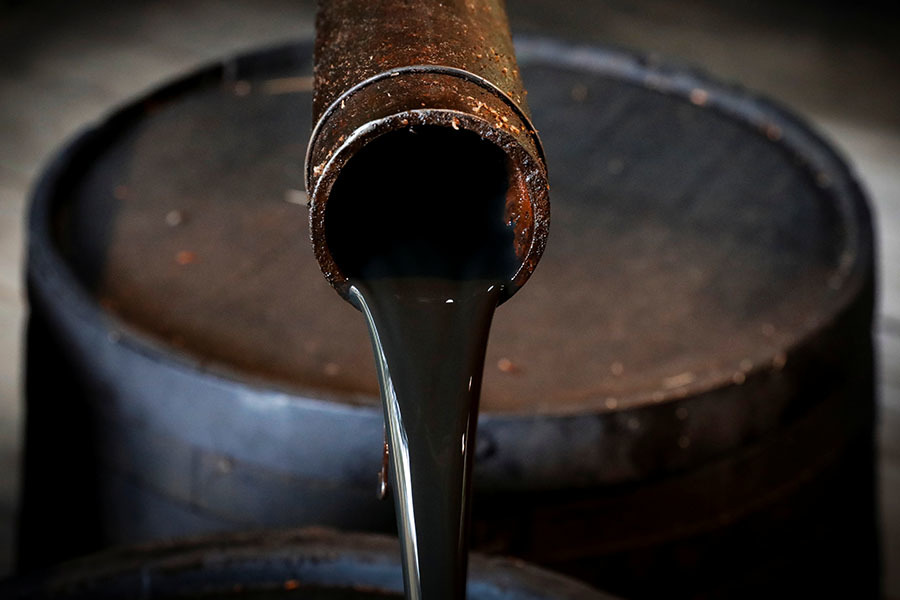In 2020, the United States purchased from Russia the maximum volume of oil in the past nine years.
This is evidenced by the materials of the US Energy Information Administration (EIA).
According to the department, from January to December, the United States increased imports of Russian energy raw materials by almost 3.5% - up to 538 thousand barrels per day.
The achieved figure was the highest since 2011.
At the same time, Russia managed to bypass Saudi Arabia and became one of the three main oil suppliers to the United States.
The first and second places in terms of sales are traditionally taken by Canada (4.1 million barrels per day) and Mexico (750 thousand).
“The main motive for American buyers is profit.
If the United States is increasing imports of Russian oil, then it is economically more profitable than buying raw materials from a number of other producers.
Since the geopolitical disagreements between Washington and Moscow and the related sanctions do not affect oil trade, American enterprises are guided by economic considerations and willingly buy it, "Oksana Lukicheva, an analyst on Otkritie Broker commodity markets, said in a conversation with RT.
The United States has been steadily increasing oil imports from Russia for the second year in a row.
According to experts, supplies began to grow noticeably after the United States introduced sanctions against Venezuela.
“The fact is that earlier it was Venezuela that provided the needs of American refineries in heavy grades of oil (with a high content of sulfur impurities).
After the imposition of sanctions, the States began to actively purchase this type of raw material from Russia, "Anna Zaitseva, an analyst at Finam Group, told RT.
In January 2019, the United States imposed restrictions on Venezuela's largest oil company, Petróleos de Venezuela, SA (PDVSA).
In total, Washington blocked the assets of the corporation for $ 7 billion, and the lost profit of PDVSA from the sanctions in 2019 was supposed to be $ 11 billion.
According to the EIA, as a result of the introduction of restrictions in 2019, the export of Venezuelan oil to the United States fell more than six times - from 586 thousand to 92 thousand barrels per day.
At the same time, in 2020, the States completely stopped purchasing hydrocarbons from the Latin American country.
Thus, Washington has deprived itself of the opportunity to purchase heavy oil, and the energy resources produced in the States themselves, by their properties, are not suitable for many local oil refineries.
Against this background, the United States was forced to resort to Russia's help.
Oleg Anashkin, associate professor at the Faculty of World Economy and International Affairs at the Higher School of Economics, told RT about this.
“In recent years, the production of hydrocarbons in the United States has significantly increased due to shale oil.
In turn, shale oil is a light energy resource.
It is used to make gasoline, but it is not suitable for petrochemicals.
And since some of the American refineries are designed to process heavier oil, there is a shortage of such raw materials in the United States.
There is nowhere else to get it on the market, except from Russia, ”Anashkin explained.
American-style import substitution
Curiously, as oil purchases from Russia increased, the United States sharply reduced its imports of raw materials from OPEC countries.
So, in 2020, the volume of supplies of hydrocarbons from the cartel countries to the United States fell by almost half - to 887 thousand barrels per day.
The value became the lowest ever observed (since 1973).
In particular, the import of oil to the United States from Saudi Arabia - one of Washington's leading partners in the world energy market - decreased by 1.5%, to 522 thousand barrels per day - the lowest level since 1985.
At the same time, Iraq reduced the supply of energy raw materials to the United States by 48% (to 177 thousand), Nigeria - by 61% (to 75 thousand), Angola - 18% (to 31 thousand), and Kuwait - by 38% (to 28 thousand). .).
According to experts, the OPEC states mainly produce light grades of oil.
Against this background, the United States is increasingly refusing to purchase such raw materials and, as an alternative, is trying to use its energy resources in industry.
“The states are generally reducing imports of light grades of oil, which are not as necessary for refining as heavy and sour grades.
It is easier to replace this oil with its own production, which is what the United States is doing, ”explained Oksana Lukicheva.
Reuters
© Brendan McDermid
In addition, the drop in oil purchases from the cartel countries is partly due to the operation of the OPEC + agreement.
This point of view in an interview with RT was expressed by Igor Galaktionov, an expert on the stock market "BCS World of Investments".
As a reminder, under the OPEC + agreement, oil exporting states specifically limit the production of hydrocarbons.
By their actions, the countries are trying to achieve a balance between supply and demand on the world energy market.
This policy of the alliance members is designed to keep oil prices from new collapses.
Due to the agreement in 2020, the OPEC states reduced production by almost 12.5% - to 25.65 million barrels per day.
At the same time, from January to February 2021, the production of raw materials by the cartel countries further decreased and reached 24.85 million barrels per day.
This is stated in the materials of OPEC.
“As production in OPEC countries decreased, so did the volume of imports to the United States from the cartel states. In addition, last year, against the background of the pandemic, the consumption of liquid fuel in the United States fell by almost 12%, so the decision to reduce imports looks quite logical, ”concluded Igor Galaktionov.

